I’m a relatively recent late convert to making my own marmalade.* I’ve liked it since the early days of eating what I now realise was cheap, sugary, and only vaguely orangey ‘marmalade’ with an average of one tiny sliver of peel per knife-load. I had a thing for Rose’s Lime Marmalade in my teens - I thought the old-style jar and label were very sophisticated - and then moved onto overcooked, thick-cut styles which I never truly enjoyed (it’s amazing how tough and chewy cooked peel can be) before more or less renouncing it altogether.
[this week at Cambridge market]
Then in January 2019 a friend visited and brought a jar of marmalade that her husband had just made, and it completely altered my thinking. Fran very kindly wrote out her recipe with full, foolproof instructions, I whizzed to Cambridge market for Seville oranges and lugged home bags of granulated sugar, put the Beatles on (‘tangerine dreams and marmalade skies’), followed Fran’s directions, squeezed, sliced, simmered and boiled, and hey presto made a big batch of marmalade for a fraction of the supermarket price. It had taste, texture, colour, and a mathematically correct ratio of peel to suspension. It was excellent, though I say so myself.
Although it feels like you are inflicting a sort of repetitive strain injury on yourself by dealing with the peel and pith of 1.5kg of oranges, not to mention handling the industrial-grade acidity of Seville oranges - I wear an apron and latex gloves and feel like a fruit surgeon - it’s worth it. It’s an article of faith, an investment in the twelve months which stretch out ahead. I don’t freeze fruit to make batches over the year, because I think these short-season oranges truly belong to their season. Besides, it’s a joy to use a special fruit which if you blink you’ll miss it - and Simon once witnessed a Seville orange scuffle in Waitrose - to make something bright and beautiful in grey January.
In addition to Fran’s recipe, I made myself a little illustrated marmalade book and I note down the quantities and timings and observations for each batch so that I have an aide-mémoire when new year amnesia sets in and I wonder what I did the previous January. Also, I’ve yet to come across a recipe in a book which fully explains that the setting point/wrinkle test for marmalade comes at a different stage to jam, and that in fact it’s more like a jelly - so if you over-boil by even a couple of minutes, getting it out of the jar will be like excavating or mining glued-in peel. And anyway, it lasts brilliantly. I’m not one of those people who writes to The Times or The Guardian saying that they’ve just found a jar of their grandmother’s 1962 marmalade at the back of the pantry and it’s still delicious. No, my firm belief based on empirical evidence is that marmalade should be made in January to be eaten before the next January. Not a marmalade despot at all.
I also love candied peel, but it’s so difficult to find the real thing and when you do its price is seemingly on a par with saffron and caviar. I’ve had to give up using the dried-up cuboid pellets which masquerade as mixed chopped peel as they were vetoed in Christmas cakes by various Brockets. The problem is that I’ve baked with the real thing and it’s worlds apart: it actually tastes of the fruit - lemon, orange, kumquat, clementine - and doesn’t require a hacksaw to chop it up.
[detail of ‘Still life with fruit’ by De Heem - the cherries in Dutch C17 paintings always look like translucent glacé cherries]
When Tom and Alice were very young we visited a traditional confiserie in Provence so that I could stock up on candied peel and glacé cherries; they let us have a little walk round the factory and our shoe soles, covered in sugary syrup, stuck noisily to floors for ages after. I’ve never forgotten the delight of seeing and smelling this place, and sometimes wonder if glacé fruit tourism could be a thing? I’d sign up immediately.
Or maybe I just have to get my peel kicks vicariously by looking at paintings. I went to the Fitzwilliam this week (side note: it’s amazing and has all sorts of wonderful collections and we still can’t believe it’s free and on our doorstep) to see the Glenn Ligon exhibition, the highlight of which is the room crammed with flower paintings, mostly Dutch, mostly C17-C19, and is absolutely stunning.
I also went for the Picturing Excess display of four huge, mid-C17 paintings by Jan Davidsz de Heem which are being shown together for the first time. And what struck me most - in paintings which are unsettlingly full - were the fruits which appear in all of them. The lemons have thick, gleaming, nubbly peel, and soft white pith, and would be ideal candidates for candying.
They were fresh, bright spots in rather sickly, overwhelming settings.
[the smaller painting ‘Still life with fruit’(1646) by de Heem with lemon peel which has a painted surface texture just like the real thing]
They also have unfeasibly long spirals of peel, like organic Slinkies, which I’m quite sure would not fit back on the fruit (one article I read said they just keep going, like silk scarves pulled from a magician’s sleeve - a nice image). But it’s fun to imagine how they peeled them so artistically; I half-imagine De Heem had an apprentice boy whose job it was to do just this. It reminds me of Sleepless in Seattle when Tom Hanks tells his son who is worried he is forgetting his mother that she could “peel an apple in one long, curly strip” (cue the tears as I write this). We know Meg Ryan is going to be the perfect stepmother when we see her peeling an apple as she listens to the widowed Tom Hanks on the radio (more tears). (What bothers me, though, is that her peel breaks half-way so she doesn’t get a single continuous loop, and I get worried that it’s an omen, but I guess I need to remember it’s a romantic comedy).
[‘Still Life’ (undated) by George Leslie Hunter (1877-1931)]
It seems the peel convention in art lasted a long time. I’ve been looking at more still lifes with fruit, and there have been plenty of lemons and oranges with long, unbroken garlands of peel until the early C20. After that they stay whole, unpeeled, sometimes just sliced in half. Maybe artists just thought the lemon was getting too fancy and that curling peel was too Rococo or Baroque, all swags and ribbons and curlicues. Even Jim Ede, who must have been inspired in part by De Heem’s various lemons on pewter plates to have the same in Kettles Yard, kept his lemons intact and very Modernist.
[London, 9 October 1963. Good milk bottle on the table, too]
But back to marmalade and the part it plays in our culture and breakfasts. I adore the brilliantly visual phrase ‘marmalade-dropper’ for a shocking piece of news or scandalous newspaper article at the breakfast table; there is often one in the opening scene of an Agatha Christie mystery (or indeed the marmalade itself may contain the fatal poison). Marmalade is undoubtedly at its best with proper, printed newspapers and toast. I’m in good company here: The Beatles, James Bond, Captain Scott, Lord Peter Wimsey, and Edmund Hillary all enjoyed it. And who knew that D.H. Lawrence was a maker of marmalade, still less an enthusiastic cleaner, saying. “I got the blues thinking of the future, so I left off and made some marmalade. It's amazing how it cheers one up to shred orange and scrub the floor.” Sadly, this practical remedy only applies in Seville orange season, but the outcome lasts all-year-round.
Happy Sunday!
*I may be a late starter but many claim that making and eating marmalade is the key to a long, healthy life
MITTEN UPDATE:
I changed my mind after seeing that the pattern I liked required 1.5mm or 2mm needles. I don’t have a 2mm set and you can’t even find 1.5mm needles in the UK, and even if I could, I’m not sure I have that level of commitment/eyesight. So I started with the Norwegian mittens from Idd pattern in this book. A whole season of Ted Lasso later - it is just as good the second time - et voilà, an almost complete mitten:
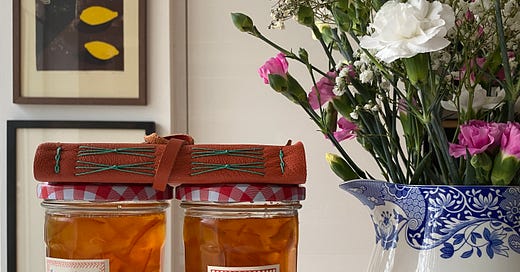



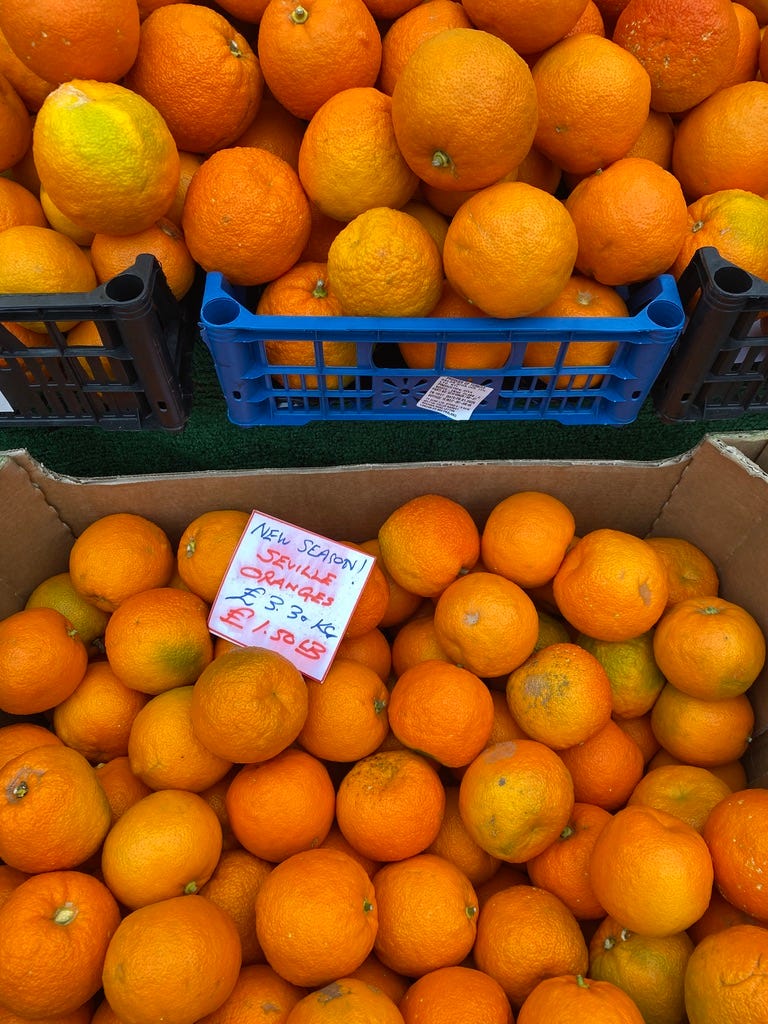
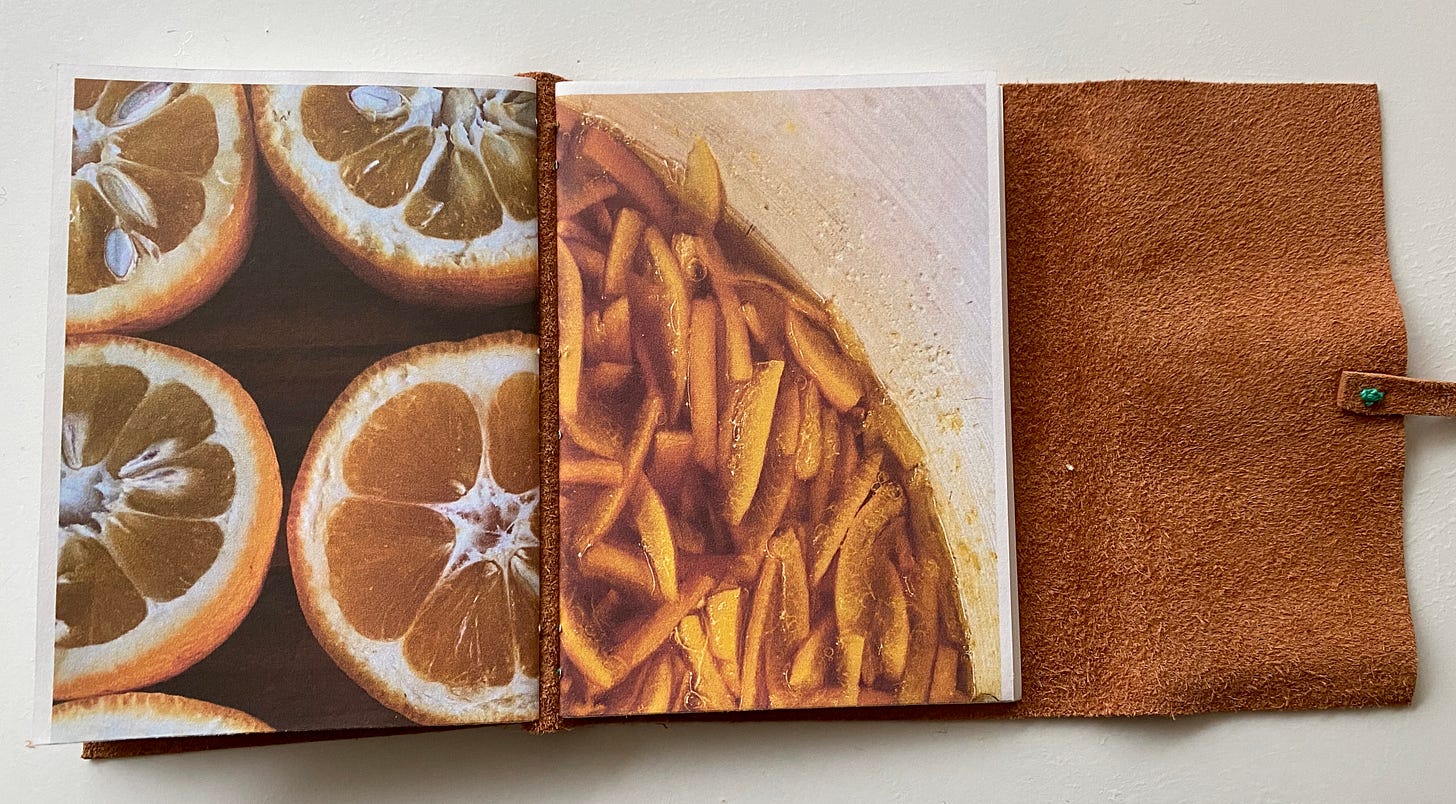
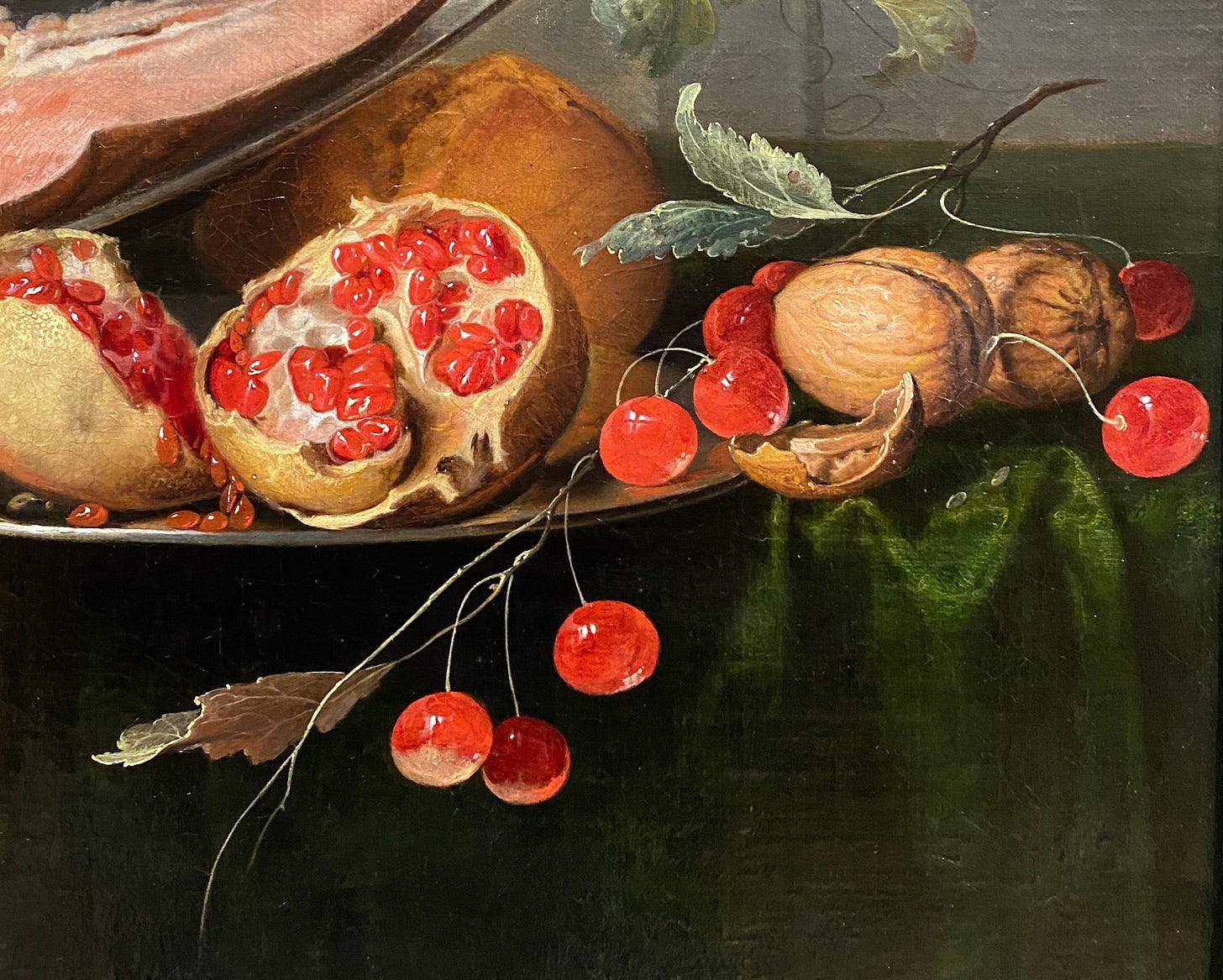

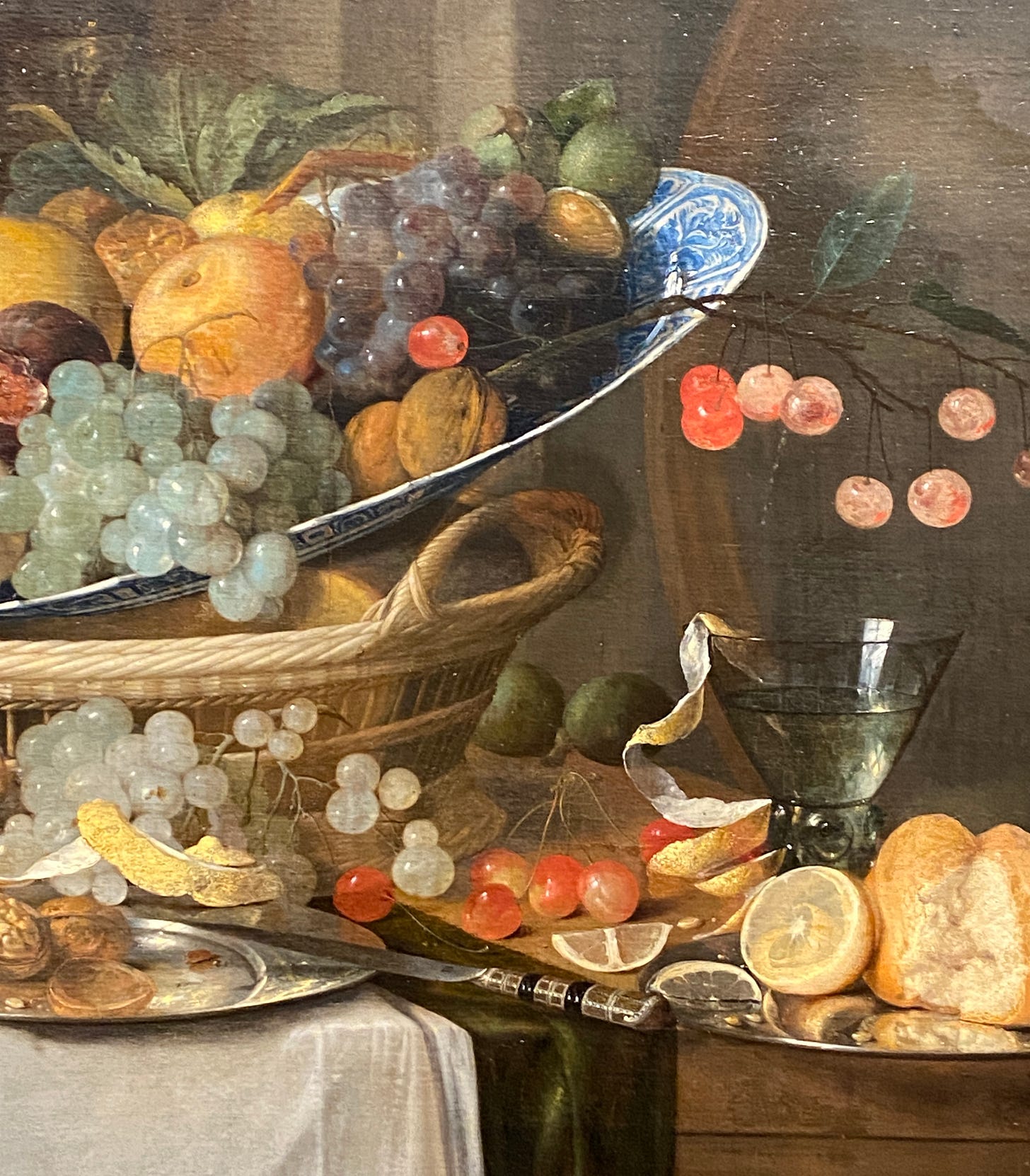


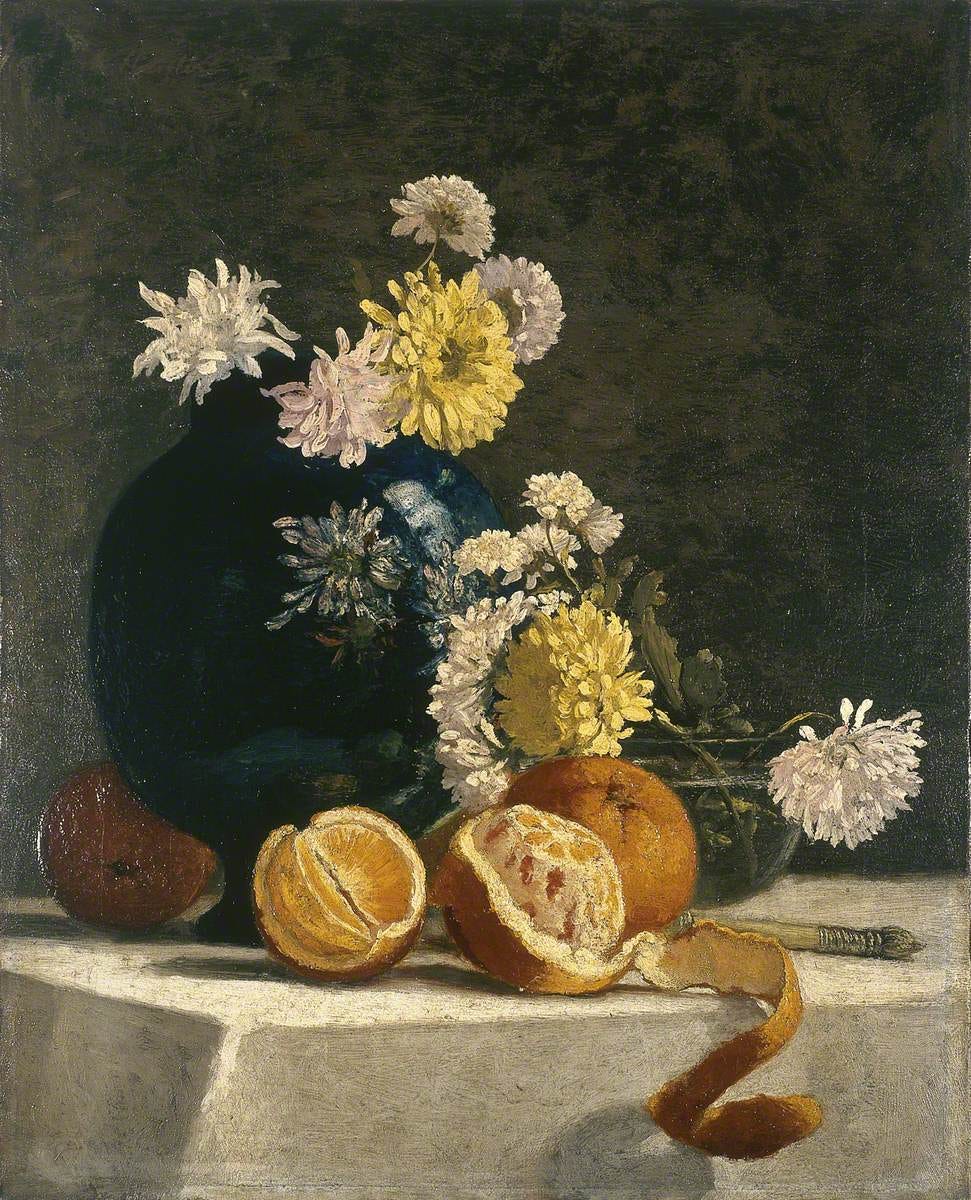


Could I recommend the crystallised oranges from Emmett’s in Suffolk? They have been a game changer with resident peel haters here…..And I have just bought Camilla Wynne’s book “Nature’s Candy’ as I am going to give home made glacé fruit a go here. I think it is interesting that people have such loyalty to a particular recipe for marmalade. Patients are always telling me that for decades they have been making an especial one handed down. I wasn’t lucky enough to have this in my life and there is a family keeness for Nigel Slater’s marmalade recipe so that’s what I shall be making this week. Sadly, despite several attempts, I have never managed to recreate my Dad’s beloved Roses’s lime marmalade at home. Have you seen the international marmalade competition hosted by the Dalesman? Pam the Jam in heavily involved and people internationally come up with some splendid sounding concoctions that are sold by them and in Fortnum’s. Apparently marmalade is having a renaissance since the Paddington films!
Dear Jane, a lovely post as always. I am an enthusiastic marmalade maker. I keep hoping every year for one of my jars to win a prize at our local agricultural show, but no luck. Have you tried marmalade with crystallised ginger? 400 grams of crystallised ginger to 2lbs of Seville oranges. Put the ginger in at the same time with the 4lbs of sugar. It half dissolves in the boiling process. When it's all bottled up and then ready to be eaten you get half dissolved pieces of ginger to excavate from the jar. Also I think Roses Lime Marmalade is improved if it't kept in the fridge, it's all nice and cold when you put it on hot buttery toast.